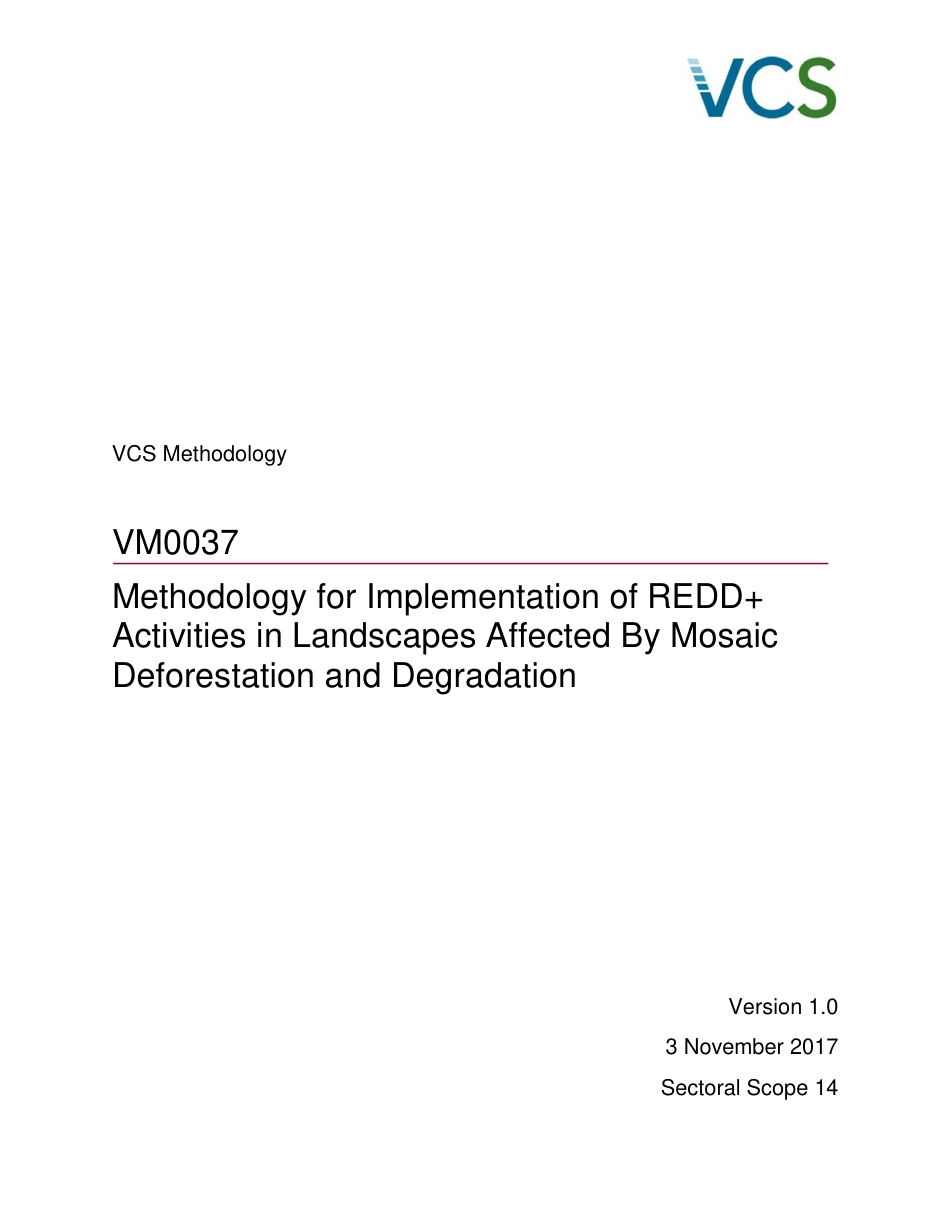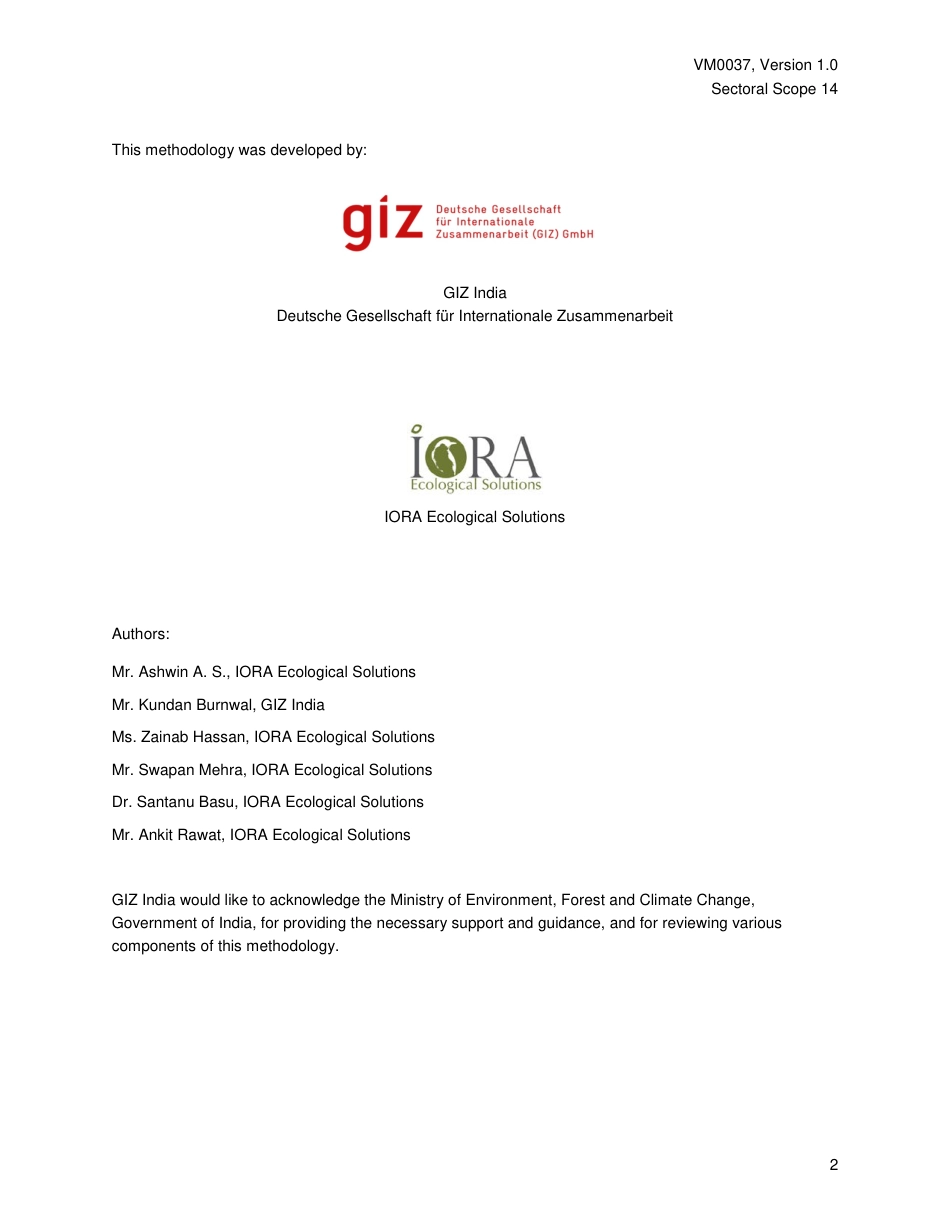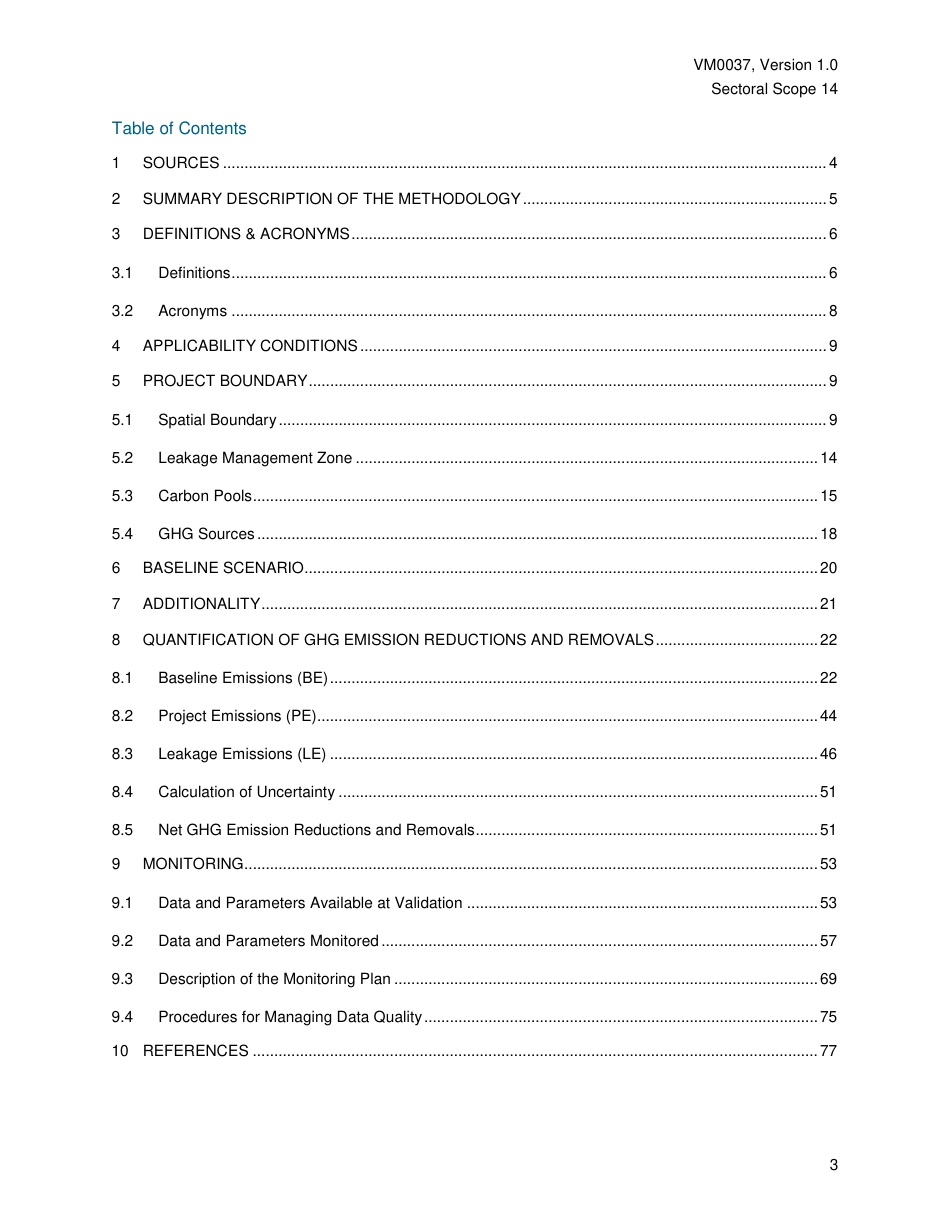VCS Methodology VM0037 Methodology for Implementation of REDD+ Activities in Landscapes Affected By Mosaic Deforestation and Degradation Version 1.0 3 November 2017 Sectoral Scope 14 VM0037, Version 1.0 Sectoral Scope 14 2 This methodology was developed by: GIZ India Deutsche Gesellschaft für Internationale Zusammenarbeit IORA Ecological Solutions Authors: Mr. Ashwin A. S., IORA Ecological Solutions Mr. Kundan Burnwal, GIZ India Ms. Zainab Hassan, IORA Ecological Solutions Mr. Swapan Mehra, IORA Ecological Solutions Dr. Santanu Basu, IORA Ecological Solutions Mr. Ankit Rawat, IORA Ecological Solutions GIZ India would like to acknowledge the Ministry of Environment, Forest and Climate Change, Government of India, for providing the necessary support and guidance, and for reviewing various components of this methodology. VM0037, Version 1.0 Sectoral Scope 14 3 Table of Contents 1 SOURCES ............................................................................................................................................. 4 2 SUMMARY DESCRIPTION OF THE METHODOLOGY ....................................................................... 5 3 DEFINITIONS & ACRONYMS ............................................................................................................... 6 3.1 Definitions ........................................................................................................................................... 6 3.2 Acronyms ........................................................................................................................................... 8 4 APPLICABILITY CONDITIONS ............................................................................................................. 9 5 PROJECT BOUNDARY ........................................................................



